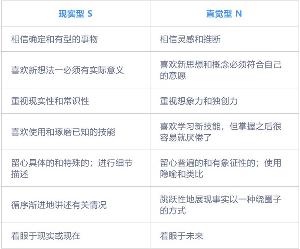SharePoint2013 以其他用户登录和修改AD域用户密码的功能使用介绍
sharepoint默认是没有修改AD密码 和切换 用户的功能,这里我用future的方式来实现。
部署wsp前:

部署后:

点击以其他用户身份登录

点击修改用户密码:

这里的扩展才菜单我们用CustomAction来实现,我们需要添加空项目来部署它

以其他用户身份登录得xml如下:

修改用户密码的xml如下:

这里我们需要新建一个应用程序页面,首先需要添加路径映射:

添加应用程序页面的代码如下:
<%@ Assembly Name="$SharePoint.Project.AssemblyFullName___FCKpd___0quot; %><%@ Import Namespace="Microsoft.SharePoint.ApplicationPages" %><%@ Register Tagprefix="SharePoint" Namespace="Microsoft.SharePoint.WebControls" Assembly="Microsoft.SharePoint, Version=15.0.0.0, Culture=neutral, PublicKeyToken=71e9bce111e9429c" %><%@ Register Tagprefix="Utilities" Namespace="Microsoft.SharePoint.Utilities" Assembly="Microsoft.SharePoint, Version=15.0.0.0, Culture=neutral, PublicKeyToken=71e9bce111e9429c" %><%@ Register Tagprefix="asp" Namespace="System.Web.UI" Assembly="System.Web.Extensions, Version=4.0.0.0, Culture=neutral, PublicKeyToken=31bf3856ad364e35" %><%@ Import Namespace="Microsoft.SharePoint" %><%@ Assembly Name="Microsoft.Web.CommandUI, Version=15.0.0.0, Culture=neutral, PublicKeyToken=71e9bce111e9429c" %><%@ Page Language="C#" AutoEventWireup="true" CodeBehind="ChangePassword.aspx.cs" Inherits="SharePointProjectDemo.Layouts.ChangePassword.ChangePassword" DynamicMasterPageFile="~masterurl/default.master" %><asp:Content ID="PageHead" ContentPlaceHolderID="PlaceHolderAdditionalPageHead" runat="server"></asp:Content><asp:Content ID="Main" ContentPlaceHolderID="PlaceHolderMain" runat="server"> <asp:Literal ID="ltMsg" EnableViewState="false" runat="server"></asp:Literal><div> <h3> <span>修改密码</span> </h3> <table width="400px"> <tr> <td> 域 </td> <td> : </td> <td> <asp:TextBox ID="txtdomain" runat="server" ></asp:TextBox> </td> </tr> <tr> <td> 旧密码 </td> <td> : </td> <td> <asp:TextBox ID="txtOld" runat="server" TextMode="Password"></asp:TextBox> </td> </tr> <tr> <td> 新密码 </td> <td> : </td> <td> <asp:TextBox ID="txtPass1" runat="server" TextMode="Password"></asp:TextBox> </td> </tr> <tr> <td> 确认新密码 </td> <td> : </td> <td> <asp:TextBox ID="txtPass2" runat="server" TextMode="Password"></asp:TextBox> </td> </tr> <tr> <td colspan="3" align="center"> <br /> <asp:Button ID="btnChangePwd" runat="server" Text="修改密码" OnClick="btnChangePwd_Click" /> </td> </tr> </table> <br /> <br /></div></asp:Content><asp:Content ID="PageTitle" ContentPlaceHolderID="PlaceHolderPageTitle" runat="server">修改密码</asp:Content><asp:Content ID="PageTitleInTitleArea" ContentPlaceHolderID="PlaceHolderPageTitleInTitleArea" runat="server" >修改密码</asp:Content>
using System;using Microsoft.SharePoint;using Microsoft.SharePoint.WebControls;using System.Security.Principal;using System.DirectoryServices.AccountManagement;namespace SharePointProjectDemo.Layouts.ChangePassword{ public class Impersonator { // Fields private WindowsImpersonationContext ctx = null; // Methods public void BeginImpersonation() { try { if (!WindowsIdentity.GetCurrent().IsSystem) { this.ctx = WindowsIdentity.Impersonate(WindowsIdentity.GetCurrent().Token); this.IsImpersonated = true; } } catch { this.IsImpersonated = false; } } public void StopImpersonation() { if (this.ctx != null) { this.ctx.Undo(); } } // Properties public bool IsImpersonated { set; get; } } public partial class ChangePassword : LayoutsPageBase { protected void btnChangePwd_Click(object sender, EventArgs e) { string str = this.txtPass1.Text.Trim(); string str2 = this.txtPass2.Text.Trim(); string str3 = this.txtOld.Text.Trim(); string str4 = this.txtdomain.Text.Trim(); if (string.IsNullOrWhiteSpace(str4)) { this.ltMsg.Text = "域不能为空!"; } else if (string.IsNullOrWhiteSpace(str3)) { this.ltMsg.Text = "旧密码不能为空!"; } else if (string.IsNullOrWhiteSpace(str)) { this.ltMsg.Text = "新密码不能为空!"; } else if (str == str2) { this.ChangeUserPassword(this.txtPass2.Text.Trim(), str3, str4); } else { this.ltMsg.Text = "两次新密码不一致,请检查!"; } } private void ChangeUserPassword(string NewPwd, string OldPwd, string domain) { try { Impersonator impersonator = new Impersonator(); impersonator.BeginImpersonation(); using (PrincipalContext context = this.GetPContext(OldPwd, domain)) { using (UserPrincipal principal = UserPrincipal.FindByIdentity(context, IdentityType.SamAccountName, GetLoginName())) { principal.ChangePassword(OldPwd, NewPwd); } } if (impersonator.IsImpersonated) { impersonator.StopImpersonation(); this.ltMsg.Text = "已成功修改密码!"; } else { this.ltMsg.Text = "无法修改您的密码,请联系您的系统管理员!"; } } catch (Exception exception) { this.ltMsg.Text = exception.Message; } } private string GetDomainContainter(string domain) { string str = string.Empty; string[] strArray = domain.Split(new char[] { '.' }, StringSplitOptions.RemoveEmptyEntries); foreach (string str2 in strArray) { str = str + "DC=" + str2 + ","; } if (str.Length > 0) { str = str.Substring(0, str.Length - 1); } return str; } private string GetLoginName() { string username= SPContext.Current.Web.CurrentUser.LoginName.Replace("i:0#.w|", ""); if(username.EndsWith(@"/system")) { username = username.Replace("system", "sherry"); } return username; } private string GetLoginNameDomain() { string[] strArray = GetLoginName().Split(new char[] { '//' }, StringSplitOptions.RemoveEmptyEntries); if (strArray.Length == 2) { return strArray[0]; } return null; } private PrincipalContext GetPContext(string OldPwd, string domain) { return new PrincipalContext(ContextType.Domain, domain, this.GetDomainContainter(domain), ContextOptions.Negotiate, this.GetLoginName(), OldPwd); } protected void Page_Load(object sender, EventArgs e) { this.ltMsg.Text = GetLoginName().Replace("i:0#.w|", ""); } }}
相关推荐
- 【其他】 WPS文字求和在哪里 04-25
- 【其他】 WPS文字邮件合并功能怎么操作 04-25
- 【其他】 WPS文字怎么注拼音 04-25
- 【其他】 WPS文字无法打开数据源 04-25
- 【其他】 WPS文字中间空隙很大 04-25
- 【其他】 WPS文字背景颜色怎么去掉 04-25
- 【其他】 WPS文字竖着写怎么设置 04-25
- 【其他】 WPS90度怎么打出来 04-25
- 【其他】 WPS8位数字变日期 04-25
- 【其他】 WPS80+会员包括哪几个 04-25
本周热门
-
iphone序列号查询官方入口在哪里 2024/04/11
-
输入手机号一键查询快递入口网址大全 2024/04/11
-
oppo云服务平台登录入口 2020/05/18
-
outlook邮箱怎么改密码 2024/01/02
-
mbti官网免费版2024入口 2024/04/11
-
苹果官网序列号查询入口 2023/03/04
-
fishbowl鱼缸测试网址 2024/04/15
-
光信号灯不亮是怎么回事 2024/04/15
本月热门
-
iphone序列号查询官方入口在哪里 2024/04/11
-
输入手机号一键查询快递入口网址大全 2024/04/11
-
oppo云服务平台登录入口 2020/05/18
-
outlook邮箱怎么改密码 2024/01/02
-
mbti官网免费版2024入口 2024/04/11
-
苹果官网序列号查询入口 2023/03/04
-
fishbowl鱼缸测试网址 2024/04/15
-
光信号灯不亮是怎么回事 2024/04/15
-
计算器上各个键的名称及功能介绍大全 2023/02/21
-
正负号±怎么打 2024/01/08











